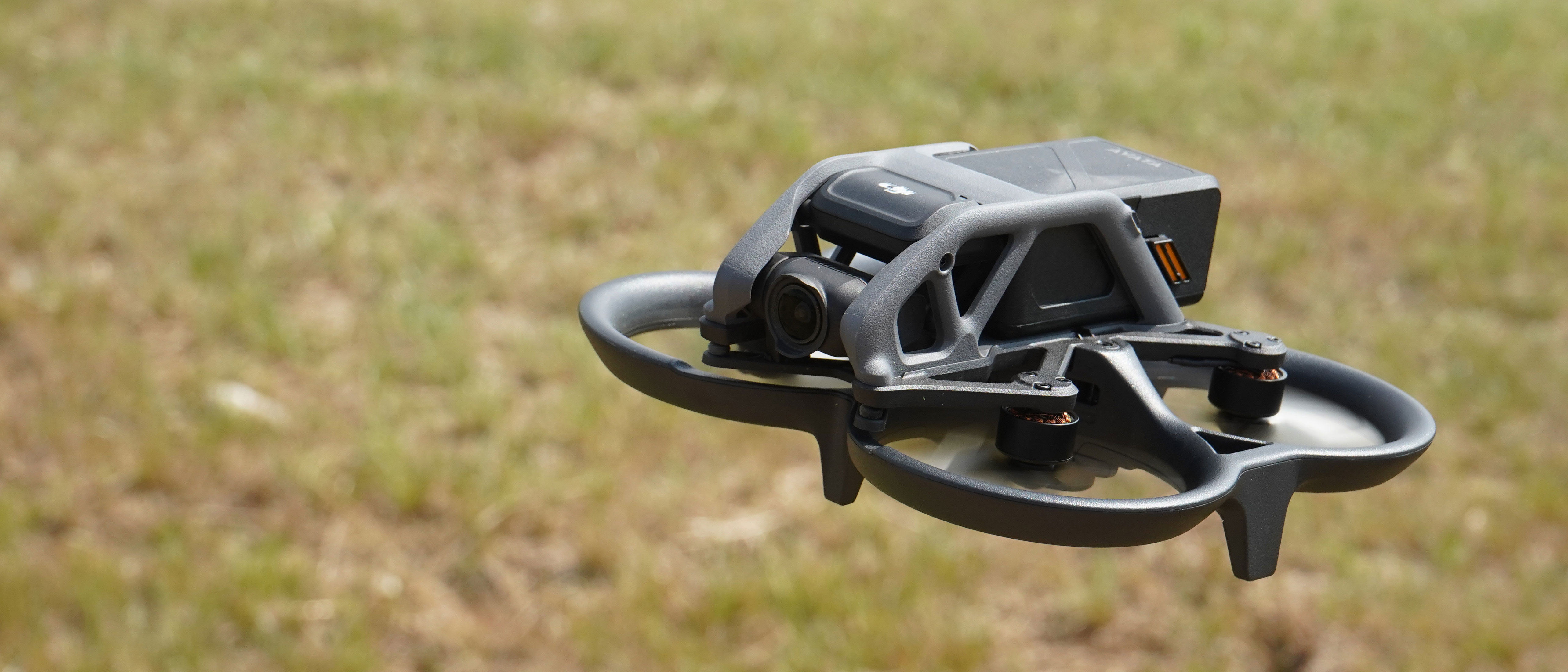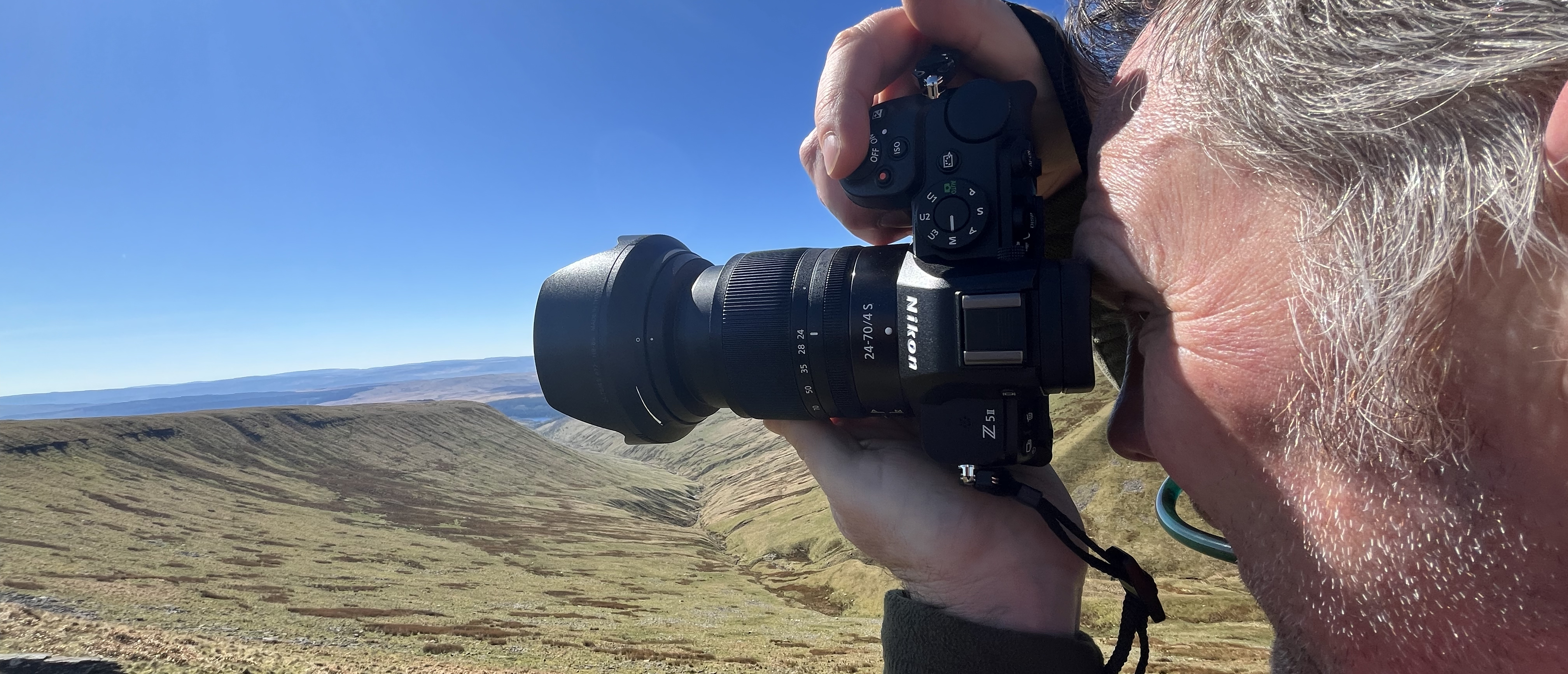Digital Camera World Verdict
It’s easy to love the robust (we checked!) DJI Avata, which makes the joys of FPV flight something accessible. If this is your first FPV aircraft it’s a significant investment as you need all the accessories, and some space to fly. What is exciting though is how easy things are beyond that, with consumer safety features and stability as well as a great camera.
Pros
- +
Robust protective frame design
- +
Produces gorgeously steady swooping video
- +
Manual camera options
- +
Easy to control even for first time pilots
- +
Better battery life than typical FPV drone
Cons
- -
No forward collision sensors
- -
DJI Motion Controller can’t achieve maximum speed
- -
DJI Goggles 2 can mist up on warm days (despite fan)
- -
Video can drop out at under 400m
- -
No bag in the Fly More kit
Why you can trust Digital Camera World
Although DJI is the biggest brand in drones, they have largely stuck to pro and consumer products which lean hard on usability and photography. They have made some accessories available to the enthusiast market who build FPV racing and stunt drones, but otherwise left it be until, in March 2021, the firm broke with that tradition and launched the DJI FPV.
That humpbacked drone could rip through the sky with the best of them, but also incorporated GPS hover, collision sensors and a single-axis gimbal (one more than most FPV drones). DJI also launched a “Motion Controller” to go with it, a floating joystick held in one hand to control the drone in a more intuitive manner. Many saw this as indicative of a serious attempt to redefine FPV which was clearly not going to stop with one drone. Low and behold, the DJI Avata is that much anticipated follow up to the DJI FPV.
The new drone is lighter than its predecessor, looking like an enthusiast ‘cinewhoop’ (the design with built-in propellor guards), but which is it closer to, and who is that for?
Design
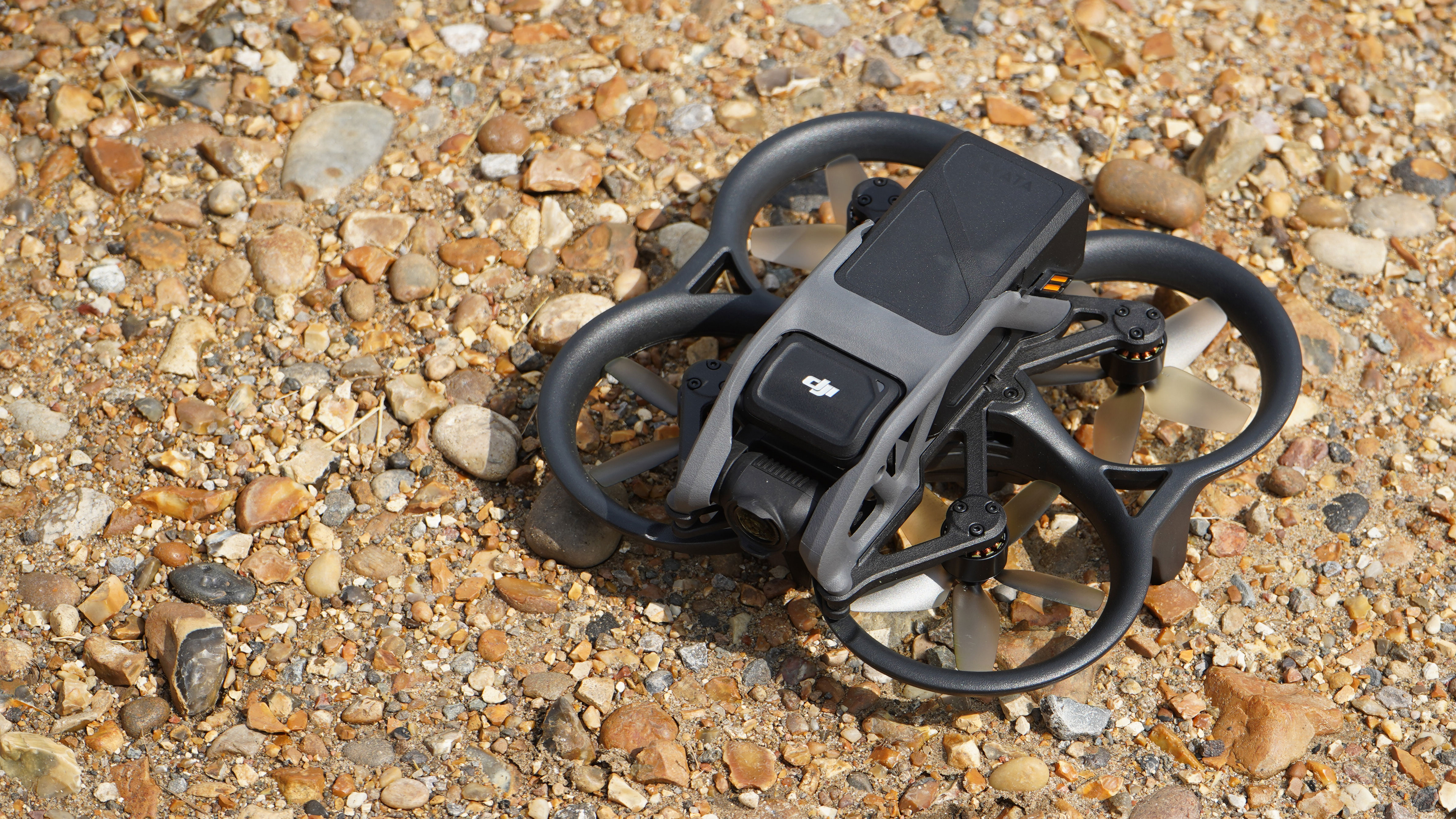
This drone is a good bit more conventional in design than the DJI FPV, which helps its looks. The ‘whoop’ frame shape, with propellors surrounded by firm guards is long established in the enthusiast market. The difference being that good quality cameras (like a GoPro) need to be attached afterward if high-end footage is needed. Enthusiasts tend to add one camera (like a GoPro) to record and while piloting with another. The later, the FPV camera, is often analog, though pricey digital alternatives are available (one from DJI).
The drone isn’t tiny, at 180 mm square (7.01 inches), but the frame feels robust. No bad thing as – after piloting – build quality is the principal collision prevention tool offered here. At the front is the camera lens on a single axis gimbal framed with what appear to be roll-bars. Underneath is where the tech is; ToF and Vision sensor lenses, but there is no forward vision sensor.
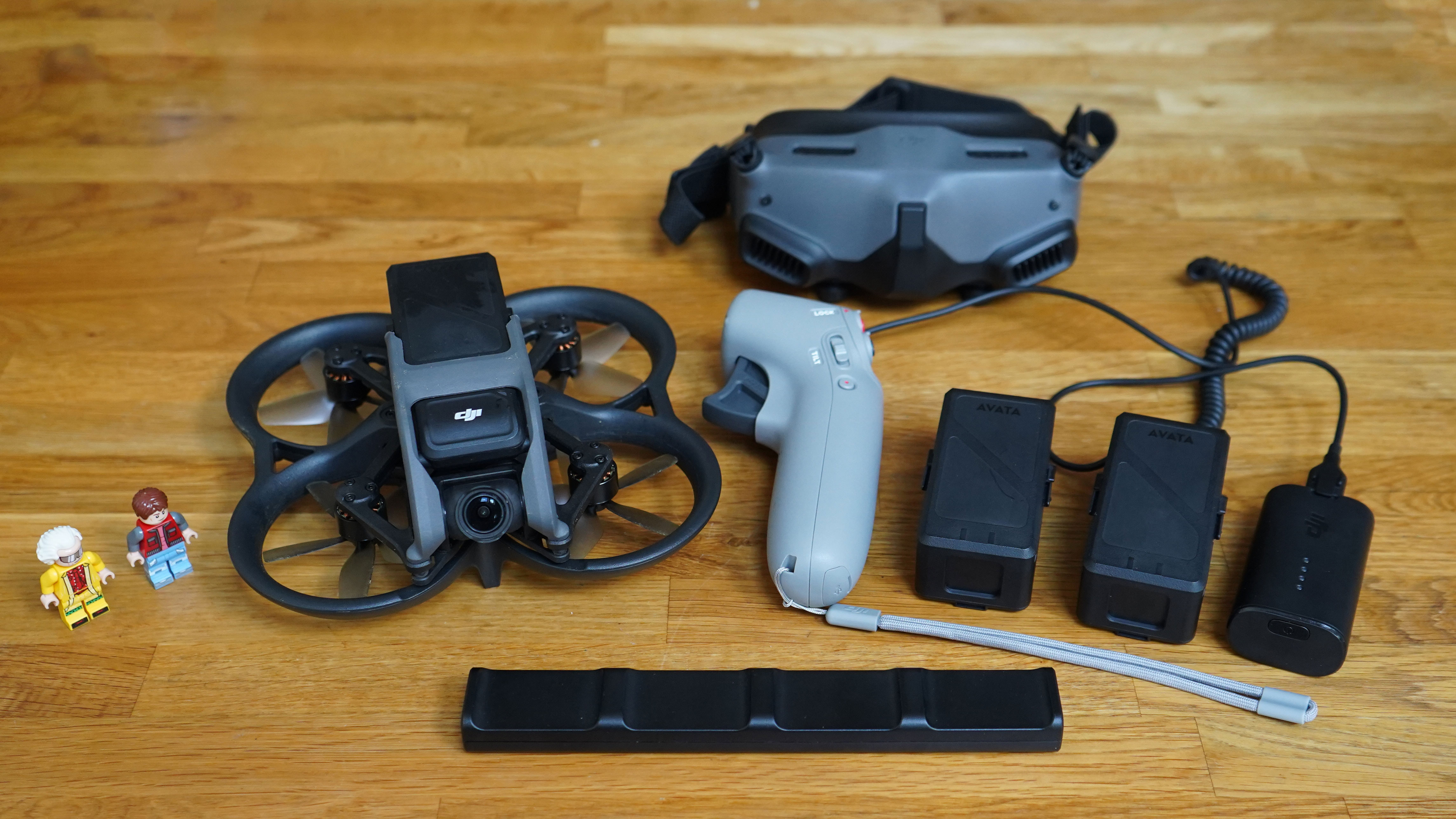
It's worth noting that the Upper Frame (roll bars) and Propeller Guard are replaceable, as well as the propellors. The tilting gimbal is mounted on a vibration dampener attached to the core body, not the replaceable parts. The battery enclosed by the frame is up to 18-minutes, a massive bump from the typical 5-10 in the enthusiast world.
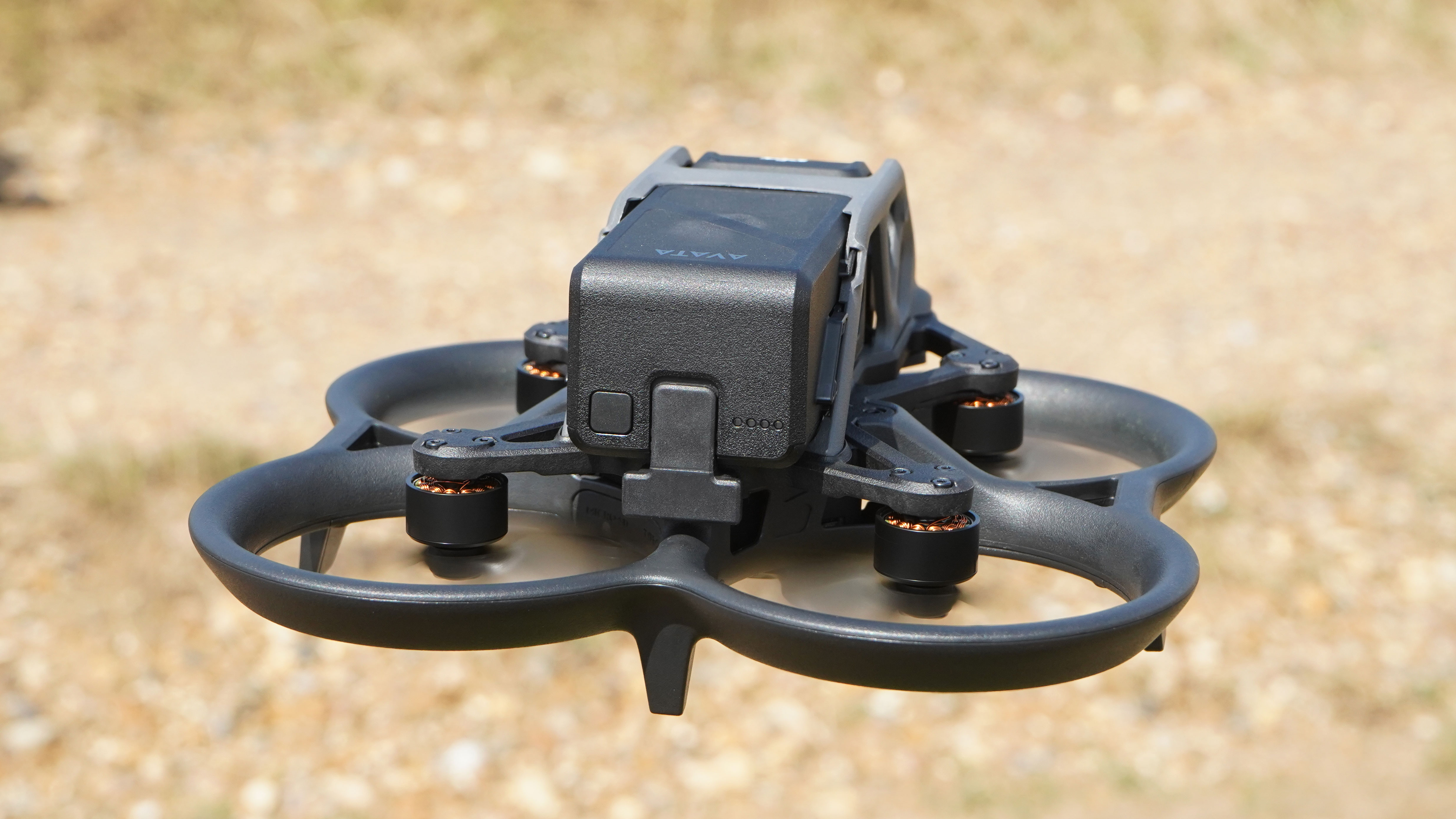
The frame also acts as ducting around the 5-blade props. The props are single moldings with narrow clearance, a precision which allows the frame to act (a little) as an aerofoil and boost efficiency. Despite generally being pro safety, DJI have not opted to place foam around the outside as some whoop frames do.
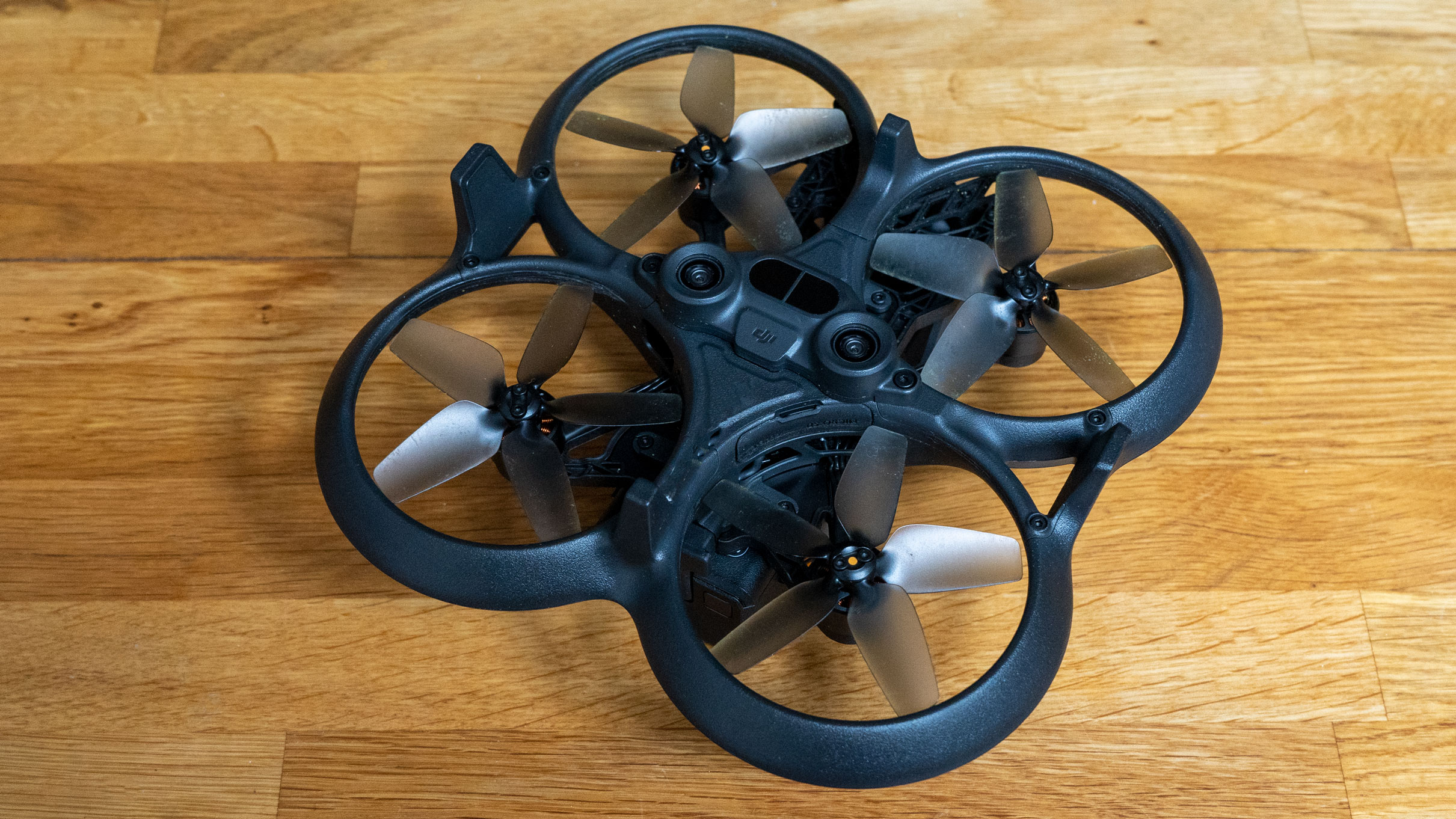
Oddly DJI have tucked a USB-C socket and MicroSD card on the inside of one of the ducts, under a rubber cover, at the same height as the blades. Put simply, you want to have to swap the card often. Perhaps there is some advantage keeping the card in place in an impact, but it’s also effect when you actually want to get at it!
Flight characteristics
When we tested the DJI FPV we didn’t manage to crash it; the collision sensors kicked in and saved us from inevitable propellor damage. Here (for scientific purposes, naturally) we did manage to fly as fast as Sport would allow into a tree. The gimbal didn’t seem to like it at first, but after powering off and restarting it was fine.
We tested the Motion Controller bundle, which might be off-putting to purists, but very quickly becomes second nature. The drone has three speed modes, but only Normal (8 m/s / 17.9 mph) and Sport (18 m/s / 31.3 mph) are available with the floating handle controller. If you stump up for the clearly PlayStation-inspired DJI FPV Remote Controller you’ll release ‘Manual’ mode and up to 27 m/s (60.4 mph).
Now ‘Sport’ might sound a bit disappointing seen like this, but it’s a very similar top speed to DJI’s consumer flagship Mavic 3 (19 m/s). Since the Avata can easily flying tight and low to the ground in bigger drones don’t do well, the Avata makes an already high speed more exciting. Hit the ‘Brake’ button and it’ll stop to a hover very suddenly.
Impressive satellite positioning (GPS+Galileo+BeiDou) plays a part, but the real magic comes from the sensor array beneath. When you’re within 20m / 60ft of the surface, the drone’s vision sensors track it, and nearer the surface ToF sensors track the height to within 10cm (3in). With that data fed back to the screen (and the software’s reluctance to dive below 1m / 3ft) stunts look audacious but aren’t as hard to pull off as you might think.
Manual mode, by the way, offers DJI enthusiasts the opportunity to try something close to enthusiasts ‘Acro’ mode. This doesn’t come naturally to drone photographers, but (with practice) will let you pull off stunts like flips. We strongly suggest doing this on the simulator first.
The overall design isn’t without oddities; it’s very hard to control a reflex desire to rotate the Motion Controller left/right when tipping left or right is what’s needed. It doesn’t help that rotating it does have a minor steering effect, so you can end up turning around on the spot!
DJI Goggles 2
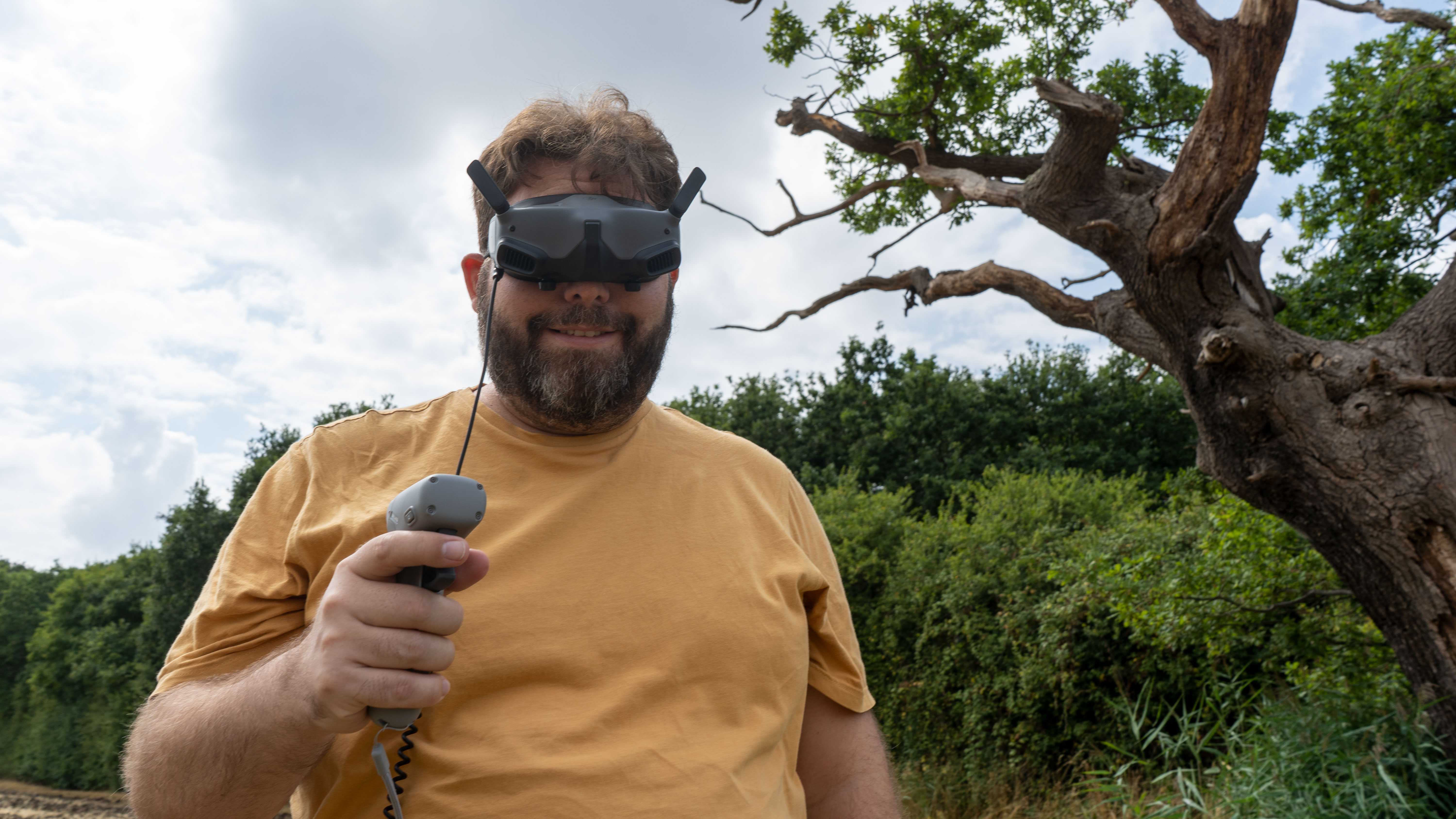
A big part of the cost of a FPV drone is the extra piece of equipment needed: Goggles. This is apparent when comparing the cost of the drone only ($629 US / £499 UK / AU$799) against the Pro View ($1388 / £1229 / AU$1979) or Fly Smart combos ($1168 / £989 / AU$1629). The fact the two bundles include different goggles is all the more confusing.
The new product here – DJI Goggles 2 – is included in the more expensive Pro View bundle, which is what we tested with. The drone also works with the DJI FPV Goggles V2, introduced with the DJI FPV last year, and this is what comes with the Fly Smart combo. Yes, the naming is more than a little confusing!
The new Goggles 2 are smaller and, at 290g, lighter. They sport two rather than four antenna and dual Micro-OLED displays. Adjusting the diopter using the slider knobs beneath is easy and effective. It becomes second nature every time the goggles move on your head, and can accommodate an interpupillary distance of 56-72mm (a child aged about six can wear them).
DJI have opted to display 1080P video at a refresh rate of 100 Hz (rather than 810P at up to 144Hz as on the older FPV Goggles V2), but we detected no problems with the fluidity. The picture was gorgeous and latency (lag between control and result) close to impossible to detect. However when the signal dropped an alarming moment or two occurs as the video drops to a low bit rate and re-establishes itself.
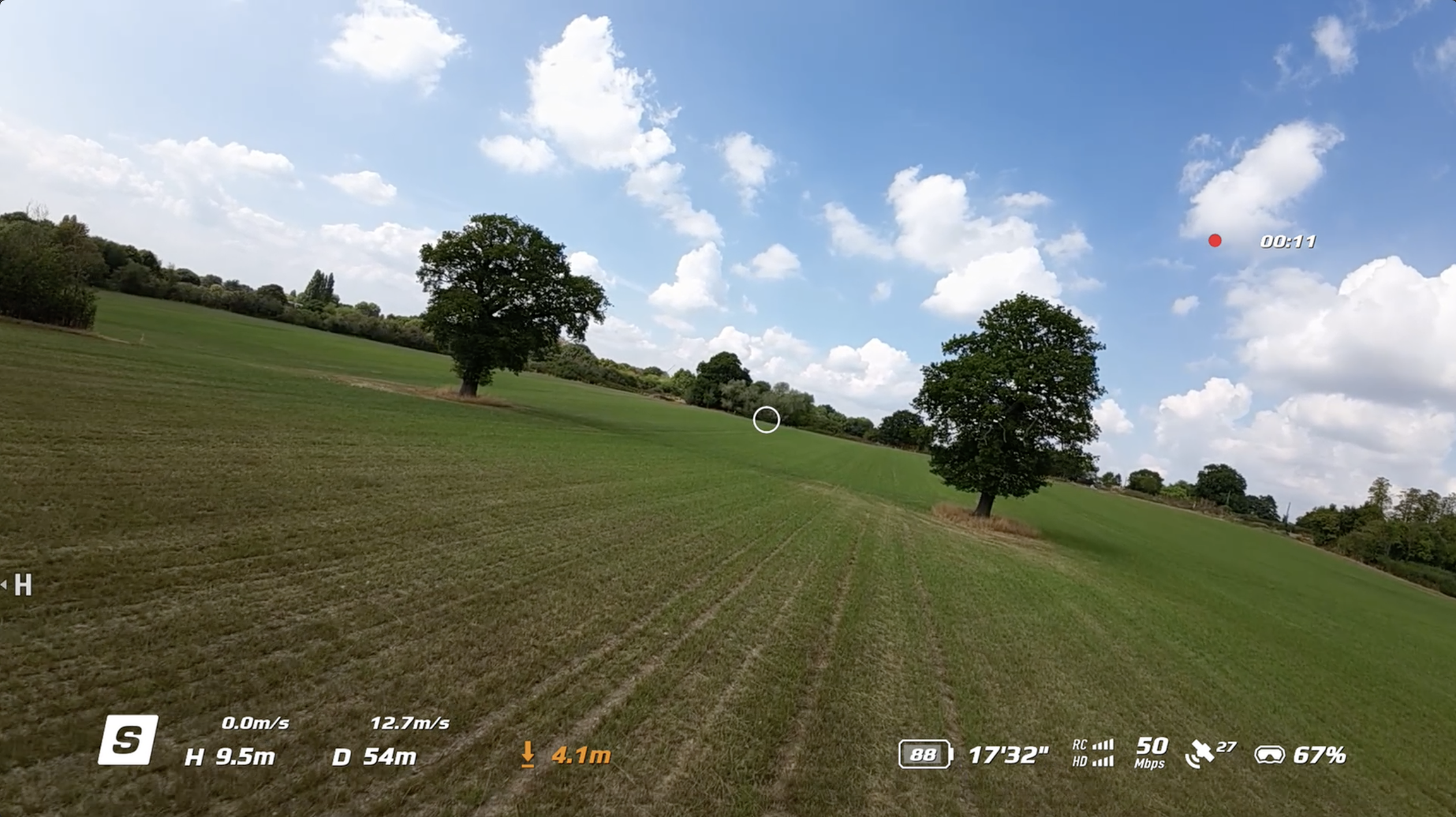
Control of the goggles is via a small touch pad on the right-hand side, and this quickly becomes second nature. Power is from a rechargeable battery which comes with a long enough cable for you to pocket it, keeping the 122g weight from your ears. It’s not the same type as the flight battery, nor is there a spot for it in the charging hub, but it provides 2 hours use and plugs straight into a USB-C cable.
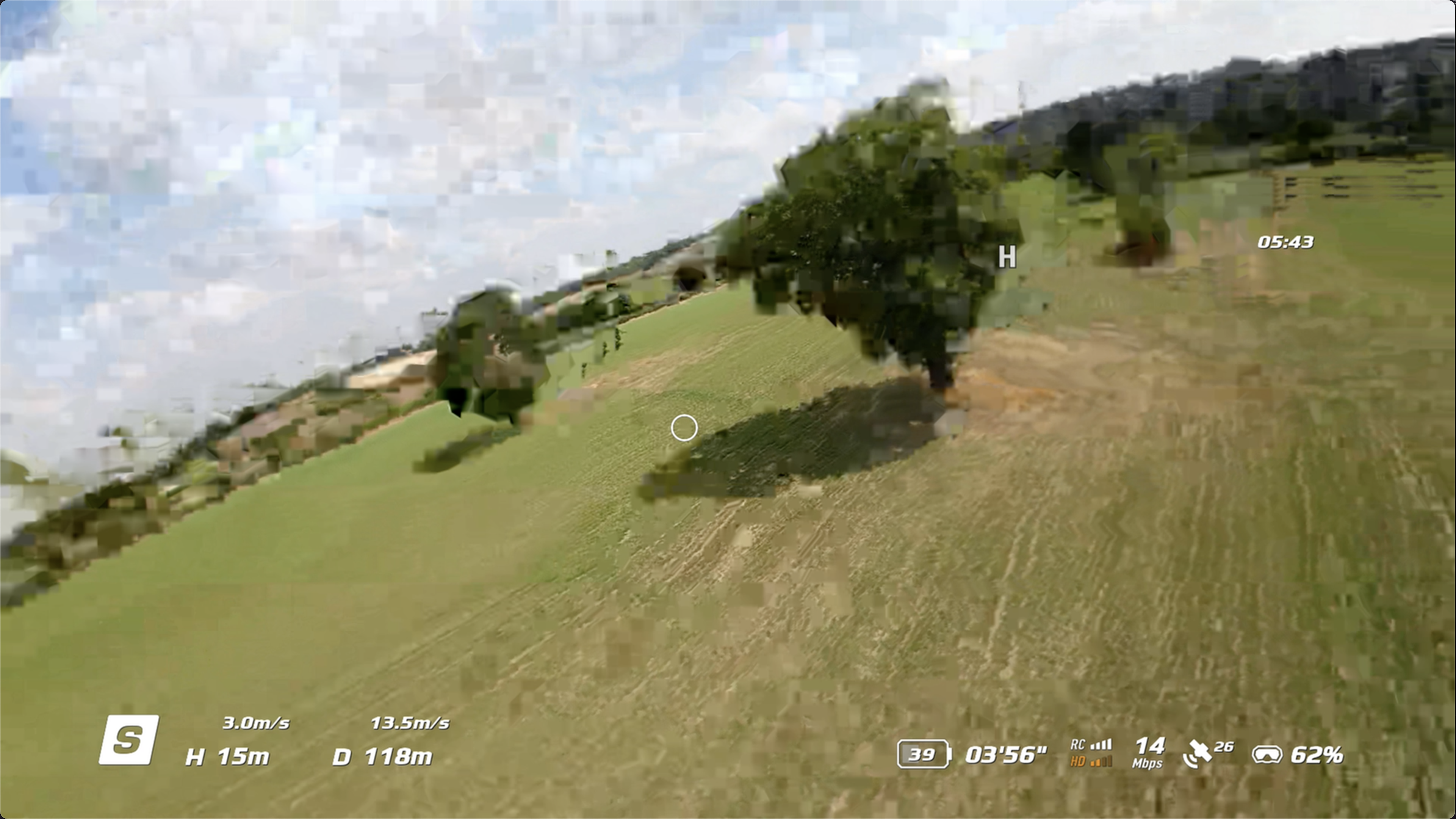
We did notice that the video dropped out to pixelation and even pauses occasionally – this is the risk of digital: it’s great until it isn’t. Even just going round one tree could do it. Usually the loss was momentary, and the brake button is there for you if it is worse. That said we were testing in the UK, where a 2km range is stated – in the US it is 10km thanks to differing radio regulations.
The goggles also support recording of video, and includes a Micro SD card so you can capture your exploits (or playback movies to yourself). They can also connect to the DJI Fly app for additional functionality, but what can be achieved alone is impressive enough.
User experience
We should point out that, when you don’t have a direct view of your drone, you should be flying with a ‘spotter.’ Someone who can tell you what your eyes aren’t seeing. That requirement (law in the UK) helps make FPV a friendly community with organized meetups, less true of typical aerial photography. It’s also a strong argument for spare batteries.
Nevertheless all the controls are available via the track-pad on the right of the goggles, with a double-fingered tap to go up a menu level. The only thing which seemed unclear on the on-screen display (OSD) was whether we could and if so were recording a screen video on the goggles as well as full-res video on the drone.
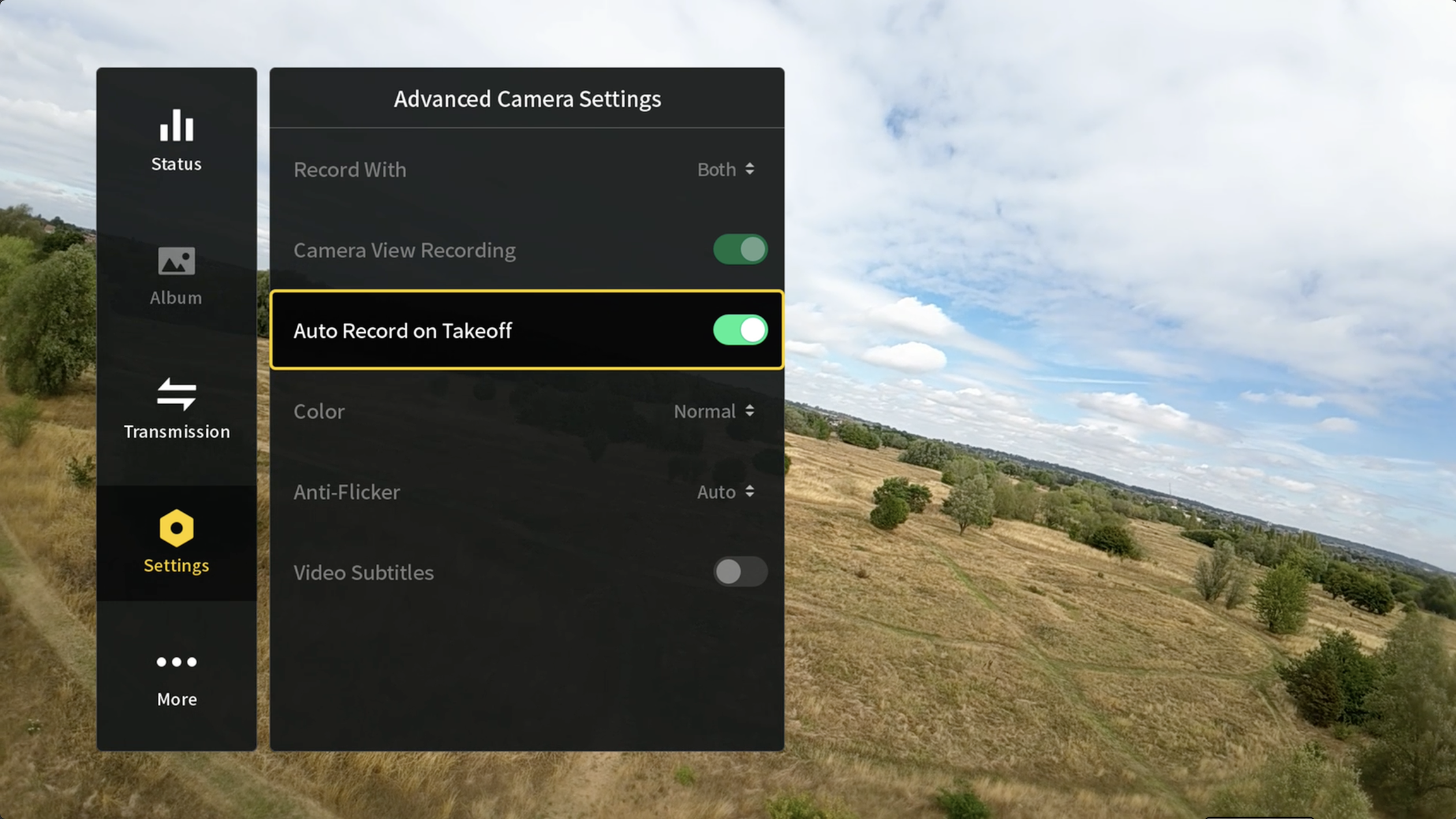
DJI Avata: Pictures and Video
The DJI Avata isn’t a natural choice for stills because the single-axis gimbal means the airframe’s cushioning – and digital image stabilization – have to absorb the rest of the vibrations. Nevertheless the 8 or 12 megapixel still images are good quality. It even managed a fairly clear (though grainy) view in a dark indoor room, but clearly the 1/1.7-inch sensor is best out in the light.

What almost certainly matters more is the video, and that is stunning. FPV offers a different cinematic option to most drones; the opportunity to fly through narrow gaps and twist and turn to give the perspective of a hero’s journey as opposed to the wide establishing shots. Ideally a professional video creative could offer clients both and ultimately the Avata’s flight modes make capturing this as-if-flying video far easier.
Above: Video samples shot with the DJI Avata, showing the quality of the 4K footage
Manual settings are also easy to operate, though we did see that the camera’s auto mode handled the exposure-shift in rapid turns to and away from the sun very elegantly, seemingly at the speed of the turn rather than sharply just afterward. Detail in the 4K is spectacular, with leaves and blades of grass clearly visible in 150kbps H.265 video and no evidence of artefacts even near subjects.
DJI Avata: the verdict
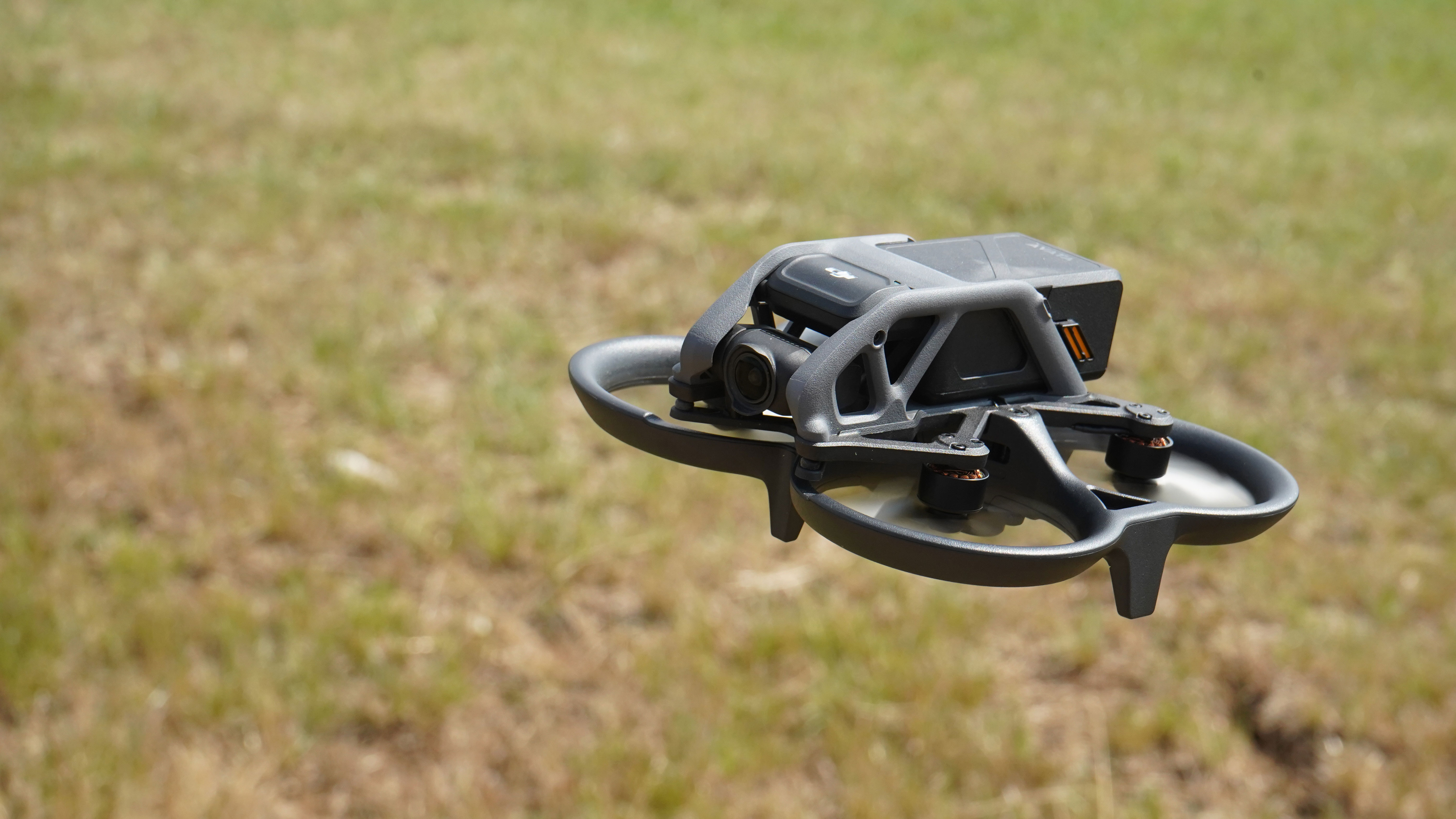
The Avata is thoroughly confidence inspiring, both in design and experience. Flight skills (admittedly without barrel rolls and other ‘Acro’ tricks) can be picked up in moments while the battery usually gave over 12 minutes useful flight before it insists on returning to home with GPS. This is a lot easier than the traditional FPV learning with shorter batteries, trickier controls and a lot of walking across fields to collect drones.
We feel compelled to note that confidence can lead to crashes; it did for us! Structurally that didn’t seem to be a problem, and we won’t question individual responsibility, but it is worth remembering the weight means this shouldn’t be flow too near others. FPV video can (and does) drop out occasionally.
Still, if you want to fly FPV – and capture amazing footage – then getting the soldering iron out and assembling a kit of parts is no longer essential. We also felt the Avata’s camera stabilization system seems to produce much smoother 4K footage than the traditional GoPro piggy-backing on a self-build – it, after all, connected in a way a separate camera is not.
In terms of flaws, the ports are inconvenient. We’d also have liked one of DJI’s custom bags in the Fly More kit as it’s a clumsy collection of bits to carry.
In answer to our original question, the Avata isn’t quite for everyone because FPV will always be a little special. For potential enthusiasts the door is that bit easier to open (and don’t worry, it’s a welcoming world, even if you don’t self-build). For creatives this is an amazing new option which, on balance, seems safer and easier to use than the DJI FPV.
Best accessories for your drone
The best drones for beginners
Best drones for kids
The best DJI drones
The best indoor drones
The best underwater drone
Best drones for fishing
12 things you need to make money from a drone
The best camera insurance for photographers
The best camera backpacks

With over 20 years of expertise as a tech journalist, Adam brings a wealth of knowledge across a vast number of product categories, including timelapse cameras, home security cameras, NVR cameras, photography books, webcams, 3D printers and 3D scanners, borescopes, radar detectors… and, above all, drones.
Adam is our resident expert on all aspects of camera drones and drone photography, from buying guides on the best choices for aerial photographers of all ability levels to the latest rules and regulations on piloting drones.
He is the author of a number of books including The Complete Guide to Drones, The Smart Smart Home Handbook, 101 Tips for DSLR Video and The Drone Pilot's Handbook.
